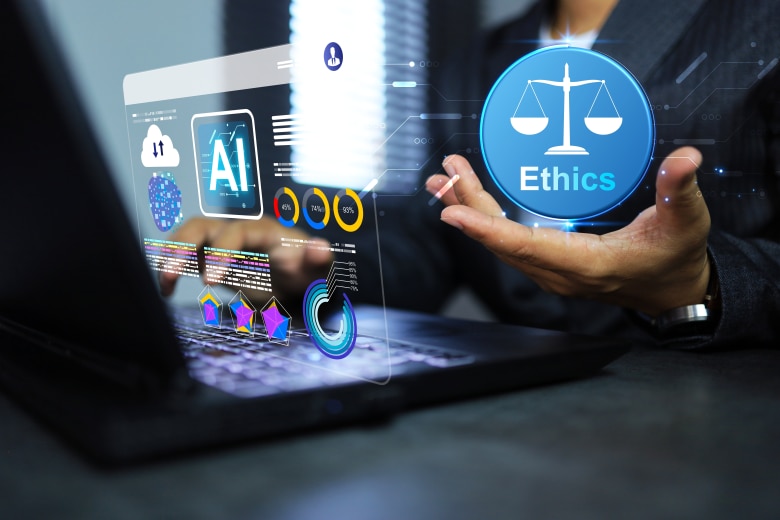James Collins, Ph.D. is on a mission to end antibiotic resistance with the help of artificial intelligence and machine learning. James Collins, the Termeer Professor of Bioengineering in the Department of Biological Engineering and Institute for Medical Engineering & Science at the Massachusetts Institute of Technology (MIT), has founded several companies based on research in synthetic biology. According to Collins, “the generic principles that apply to physical systems don’t extend so well to living organic systems.” And that’s his challenge: bridging the gap between the physical world and the biological one.
Collins explains that synthetic biology starts by looking at living systems from an engineering perspective. Rather than simply understanding how everything works, synthetic biologists must determine whether it’s possible to reverse-engineer cells to create desirable outcomes. That led Collins and his team to ask the question: What can we create in the circuits that exist in biology? To find help the answer more quickly, Collins and his team use machine learning to process the massive amount of data involved in describing life. And with 3 billion base pairs in the human genome, the work has just begun.
Drug Discovery and Infection Reduction
"We have survived the antibiotic age, but now we are looking for a new solution to antibiotic resistance." - Jim Collins
As we approach the 91st anniversary of the discovery of penicillin, drug development for antibiotics has stagnated. Methicillin-resistant Staphylococcus aureus (MRSA) causes about 20,000 deaths yearly in the U.S. alone, many of whom are children. We have survived the antibiotic age, but now we are looking for a new solution to antibiotic resistance.
Synthetic biology is bolstering the development of drugs that can detect surface infection in prosthetic limbs and work beyond the first layer of biofilm. This could be a biological component that binds to identified bacteria and delivers treatment only to the specific infection they are designed to treat. Consider the potential: The components designed through AI could be used in developing countries to identify and treat cholera. A printed test for the type of strain of Ebola virus or cholera could change global public health. Even better: the drugs cost less to produce and store.
Pathology
Image processing is one of the most effective uses of machine learning. Machine learning can be used to identify all the cats on the internet, for example – but it can also be used to identify cancerous moles. Data scientists enable the transformation of healthcare pathology by creating meaningful machine learning algorithms — for instance, to identify dangerous skin tags.
Imagine being able to identify a cancerous mole with your smartphone, or determining whether a rash is dangerous. Portable intelligence that was once only available through costly testing and experts, is being developed today. This has the potential to transform world health, as well as the field of dermatology.
The vision that machine learning can diagnose pathology better than pathologists is not unrealistic. Certain types of dense tissue cancer are identified more quickly and accurately with machine learning, which creates more access to quality care at a lower cost.
Genetic Sequencing
Collins is working with scientists to train algorithms on the 3 billion base pairs of the human genome. What do these pairs do? How do they control what a cell does? When the human genome was mapped, scientists started looking at how to use machine learning to mine genetic sequences. Now, Collins is looking deeper into the biology, developing a language to understand genetics. For example, certain people respond differently to cancer drugs or metabolize them more quickly. If we can have a deeper understanding of how drugs can be customized to individual genetic needs, treatments become more effective.
It’s realistic to believe that machine learning and synthetic biology will produce major improvements in public health. With the continual advancement of Machine Learning (ML) and computing architectures, AI applications are spanning horizons previously thought to be only available to human experts. Join us as to hear how AI and ML are changing how discoveries are made; and how to fill those models with clean data.
Don’t miss Jim Collins’ Solution Provider session at the upcoming Gartner Symposium ITxpo, “How AI and ML are Making Breakthroughs – And How to Make Them Happen,” on Wednesday, October 23rd at 3:15pm, Room 4.
Read the more of the latest blog posts on PULSE.
About the Author

Janae Sharp is a physician suicide loss survivor and the Founder and CEO of Sharp Index, a nonprofit dedicated to better physician mental health. Her work includes healthcare data and analytics marketing to improve healthcare outcomes for the underserved. Janae can code, and enjoys making communication easier in tech production, but her true passion is in matchmaking companies to create elegant health IT systems and improve health. She has worked with interoperability and social determinants of health and is an expert on patient and physician engagement. Janae has four children, enjoys learning, hiking, triathlon, and quilting. Follow Janae Sharp on Twitter: @CoherenceMed.




































